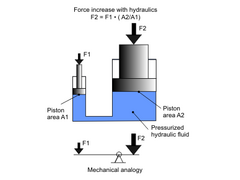
brake master cylinder
locosaki - 29/11/07 at 06:47 PM
I have just bought a pedal box with balance bar from rally design,I have 2 master cylinders, 0.700 and 0.625.Am I correct in saying I should use the
.7 for the front and the .625 for the rear ??
Cheers Mike
Mr Whippy - 29/11/07 at 06:47 PM
bigger one for the front so it locks up first.
minitici - 29/11/07 at 07:05 PM
Think you should use the .700" on the rear circuit!
If too much mechanical advantage exists over the front brakes (in other words the front
brakes are too easy to lock up), then one should consider resizing the brake caliper piston
size(s) downward to reduce force output or, in the case of dual master cylinders, resize the
front master cylinder piston size upward.
Paul TigerB6 - 29/11/07 at 07:19 PM
quote:
Originally posted by minitici
Think you should use the .700" on the rear circuit!
If too much mechanical advantage exists over the front brakes (in other words the front
brakes are too easy to lock up), then one should consider resizing the brake caliper piston
size(s) downward to reduce force output or, in the case of dual master cylinders, resize the
front master cylinder piston size upward.
????
larger master cylinder to the front is the correct way. This displaces more brake fluid for a given pedal travel and as more braking is done by the
front brakes due to weight transfer you want greater braking effort done at this end. Increasing the master cylinder piston size will INCREASE
braking effort for a given pedal travel.
rgrs - 29/11/07 at 07:37 PM
think you might want to read this
obp setup info
good luck
bob - 29/11/07 at 07:46 PM
Would that be the norm on our size/weight cars ?
I only ask as i am thinking of ditching the sierra m/c which i must admit doesnt inspire me with any confidence at speed, just trying to improve the
set up really.
Ivan - 29/11/07 at 07:49 PM
How it actualy works is the smaller the master cylinder the greater the mechanical (or in this case hydraulic) advantage, giving greater pedal
movement and less leg force for the same braking force.
So - small master cyilinder for the front and large for the back.
zxrlocost - 29/11/07 at 08:31 PM
or a good old sierra MC which works perfect out the box
britishtrident - 29/11/07 at 08:48 PM
quote:
Originally posted by Ivan
How it actualy works is the smaller the master cylinder the greater the mechanical (or in this case hydraulic) advantage, giving greater pedal
movement and less leg force for the same braking force.
So - small master cyilinder for the front and large for the back.
Full marks --- spot on.
britishtrident - 29/11/07 at 08:50 PM
quote:
Originally posted by Paul TigerB6
????
larger master cylinder to the front is the correct way. This displaces more brake fluid for a given pedal travel and as more braking is done by the
front brakes due to weight transfer you want greater braking effort done at this end. Increasing the master cylinder piston size will INCREASE
braking effort for a given pedal travel.
Think you might want to read up on simple hydraulic theory
britishtrident - 29/11/07 at 08:56 PM
Hydraulic press
From Wikipedia, the free encyclopedia
http://en.wikipedia.org/wiki/Hydraulic_press
Hydraulic force increase.
A hydraulic press is a hydraulic mechanism for applying a large lifting or compressive force. It is the hydraulic equivalent of a mechanical lever,
and is also known as a Bramah press after the inventor, Joseph Bramah. Hydraulic presses are the most commonly-used and efficient form of modern
press.
[edit] How it works
The hydraulic press depends on Pascal's principle: the pressure throughout a closed system is constant. At one end of the system is a piston with
a small cross-sectional area driven by a lever to increase the force. Small-diameter tubing leads to the other end of the system. A fluid, such as
oil, is displaced when either piston is pushed inward. The small piston, for a given distance of movement, displaces a smaller amount of volume than
the large piston, which is proportional to the ratio of areas of the heads of the pistons. Therefore, the small piston must be moved a large distance
to get the large piston to move significantly. The distance the large piston will move is the distance that the small piston is moved divided by the
ratio of the areas of the heads of the pistons.
For example, if the ratio of the areas is 5, a force of 100 newtons on the small piston will produce a force of 500 newtons on the large piston, and
the small piston must be pushed 50 cm to get the large piston to rise 10 cm. This is how energy, in the form of work in this case, is conserved. Work
is force times distance, and since the force is increased on the larger piston, the distance the force is applied over must be decreased. The work of
the small piston, 100 newtons multiplied by 0.5 meter (50 cm) is 50 joules (J}, which is the same as the work of the large piston, 500 newtons
multiplied by 0.1 meter (10 cm).


Rescued attachment Hydraulic_Force.png


